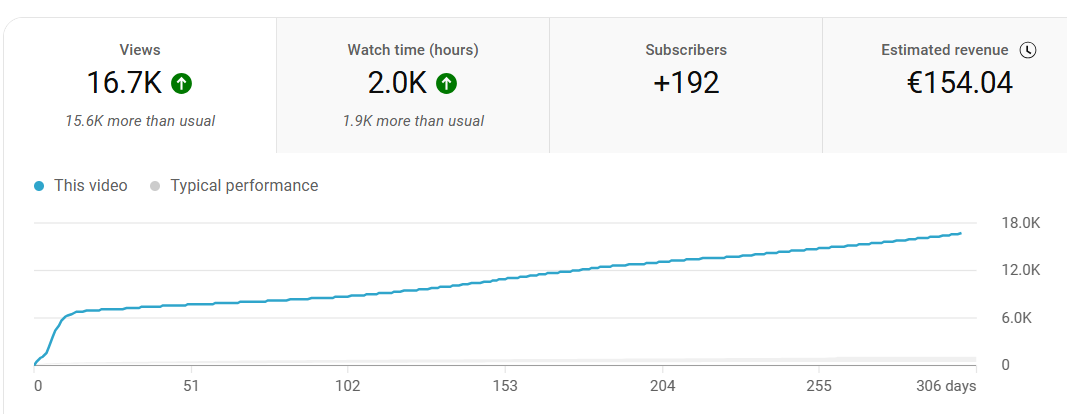Stop Wasting Time on Weak Ideas and Start Spotting Irresistible Ones
Anyone can have tons of ideas. Here are 3 methods to find the ones that actually grow your audience.
When I started my first blog, I was afraid I'd run out of topics. I was teaching photography and I knew the first principles weren't endless.
Still, I jumped in full throttle, publishing two tutorials a week. I quickly realized my fear was unfounded (like 99% of fears, by the way).
Actually, the more I wrote and read other blogs in my niche, the more ideas I got. It's normal to worry about running out of ideas, but rest assured that once you start publishing, that fear disappears.
We're drowning in ideation methods. But the real challenge is another one. It's inding good ideas, the ones that build a large, engaged audience.
In this article, I'll give the methods to sift through your ideas and find the really good ones to turn into content.
(And if you need help with idea generation, I’ll give you some links at the end)
But first: what's a good idea?
As usual, it depends. The definition of a good content idea depends on your goals.
Generally, content can serve three main purposes:
attracting attention to build an audience,
attracting clients,
building your brand.
Everything you publish helps with all of these goals. But usually, one stands out more.
For example, SEO content focused high volume keywords attracts traffic and possibly subscribers but might not convert many clients. In contrast, content that attracts clients tends to be specific, targeting low volume keywords. Brand-building content might be more personal, less keyword-focused, and also attract less traffic.
Ideally, your strategy should include content that hits all those three goals. So, when choosing your ideas, consider:
Which goal does your idea best serve?
Do you need to prioritize one goal?
Now, here are my favorite methods to find great ideas.
Look within
Your words are most effective when you're genuinely excited about them.
A simple, yet effective way to pick your next idea is as follows:
scroll through your idea list,
listen to your reactions,
choose what excites you the most.
Unless you're an alien, somewhere in the world there are others who share your passions. When you write about what excites you, and clearly communicate that excitement, those people will resonate.
There's a risk though. Writing about your interests is appealing. We spend so much time and energy on tasks we dislike! But don't turn this opportunity into navel-gazing.
Find the intersection between your passions and your audience's needs. Ask yourself: how can this idea that excites me be helpful, inspiring, or entertaining?
Simple and free market research
People go online for connection.
Over the past 15+ years, social networks were the main destination. But now that they've turned into giant billboards, people are moving to smaller communities—on Circle, Discord, Reddit, WhatsApp, and so on.
Every niche topic, interest, or problem has its own community (probably more than one). You can use these groups to generate lots of ideas and identify the stronger ones:
what do members ask more frequently?
What's most frustrating or exciting?
For example, I wrote this article on how to extract takeaways from personal stories. It got lots of views and comments.
The idea came from a conversation on Discord. A member of the group said she found it easy to tell stories, but not to extract lessons from them. I replied, and another member recommended I turned the reply into an article. Actually, she threatened to do it herself if I didn't. 🤣
Conversations like this help you in two ways:
They show you which topics are most attractive.
They help you workshop ideas. My Discord chat basically outlined my entire article.
Stand taller
Finally, a tactic I learned from SEO expert Brian Dean: the skyscraper technique. The idea is simple: create content that stands taller than your competition.
Nothing shady here. Here's how it works:
pick an idea,
look for the best content about it,
create something even better.
This method isn't limited to SEO. It works regardless of your distribution channel.
It led to one of the most viewed videos on my YouTube channel. I checked one of my competitor’s most popular videos and found a tutorial about Google Calendar. I saw the opportunity and created my own complete guide to Google Calendar. I made it better and different by adding more details, explaining more clearly, and using my signature calm tone of voice.
Here's the result
Why did it work despite a similar, strong video already existing?
Because I applied the skyscraper technique and created a better video.
So, what does "better" mean?
There are many ways to make a piece of content stand out among the competition. Even when it seems unbeatable. You can make it:
more detailed and comprehensive,
clearer, better explained,
more entertaining, or more formal, depending on your brand and audience,
more specific to your audience (sometimes changing the examples is enough).
But sometimes, just injecting your personality is enough. The people who resonate with it, will choose your content over the competition, even when you say the same things.
This looks like the easiest way to stand taller, but it's actually the hardest one. Most of us, myself included, have been required to wear masks for so long, that we don't know how to let our personality shine.
Fortunately, it's something we can relearn precisely through publishing content. I've been publishing articles and videos for over 14 years. For most of my career, I've been trying to emulate other, more successful creators. Only in recent years I've loosened and trusted my gut more.
Go, find your next great idea
I gave you three methods to find good ideas:
looking for what excites you,
study your audience,
the skyscraper technique.
You don't need to use all of them at once. Each method will likely shine in different situations. You can even combine them to find the best of the best.
But start as soon as possible, the more you practice, the more natural and effortless they'll become.
So, begin with the first method. Scroll through your idea backlog and listen to your feelings. When an idea sparks something in you, start writing about it.
But if you also need to generate more ideas, start from these articles:
Let me know how it went!
Subscribe to The Unstoppable Creator to get free articles like this every week. Or upgrade your subscription to get:
📚 Monthly Mini-books
💬 Community and 1:1 mentoring via chat
🛠️ Monthly templates to make you more productive and unleash your creativity









Thank you for these tips 🙂🙏🏽